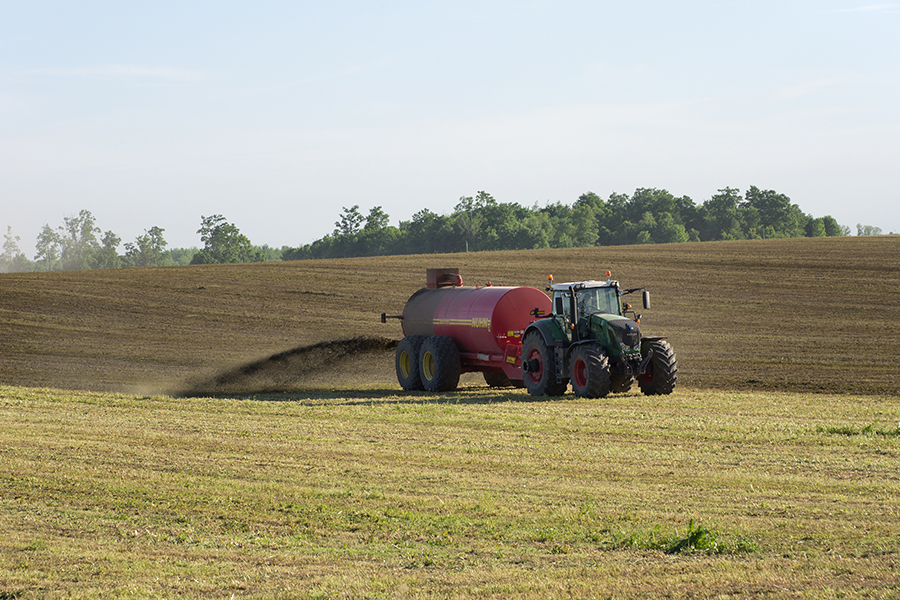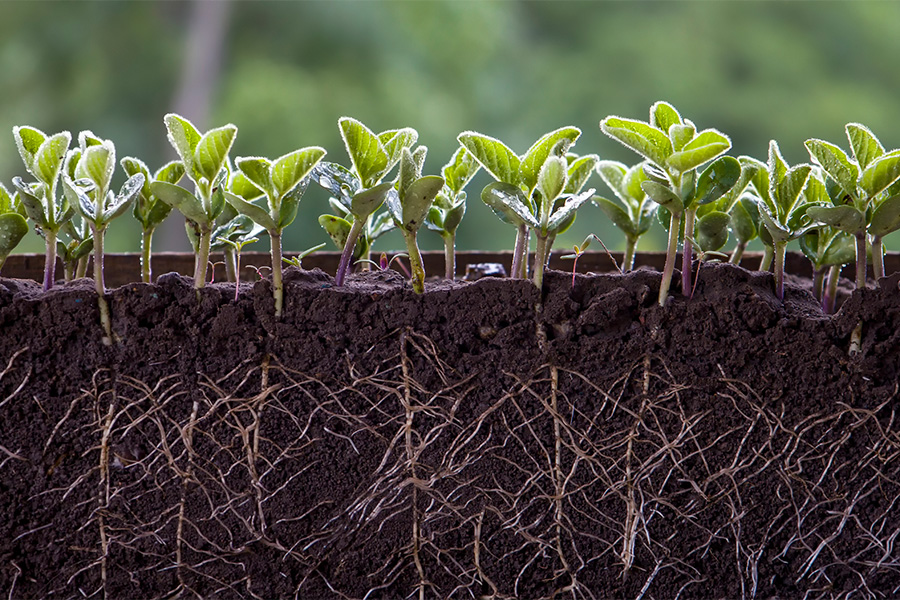Commercial Soil
-

Farmers have known for centuries that animal manures spread on pastures and cropland can improve soil fertility. In the 1920s, farmers began to use sludge from municipal wastewater treatment plants as a fertilizer. Through decades of research, the scientific and agricultural communities have come to understand that municipal sludge or “biosolids” contain valuable nutrients and organic matter that improve the soil in a way similar to animal manures. It is important to understand that biosolids are not raw sewage. Biosolids are organic solids that have been treated to stabilize organic matter and reduce disease-causing organisms or pathogens.
This publication was developed to help answer some common questions regarding the use of biosolids and to give farmers benchmarks for good practices.L. Mark Risse and Gary L. Hawkins
|
-

C 990
Soil Inoculants
Soil inoculants are used for a variety of reasons. In some cases, we add soil organisms that have a known beneficial effect. A symbiotic relationship is one that is mutually beneficial. In return for the plant feeding the rhizobia carbon from photosynthesis and giving it a home, the bacteria can “fix” atmospheric nitrogen into a form that the plant can use.
Julia W. Gaskin, Peter Gary Hartel, Elizabeth L. Little, and Glendon H. Harris
|
-

Ash has been considered a waste product instead of a resource, because few industries have taken advantage of its beneficial properties. Several alternative uses for wood ash have been developed. Land application is one of the best because nutrients taken from the land during harvest are recycled back to the land.
Julia W. Gaskin and L. Mark Risse
|
-

This publication covers a procedure for applying wood ash as a lime substitute on agricultural lands. This method can be used by manufacturers and dealers who wish to supply wood ash or by landowners who wish to receive wood ash. If the practices in this publication are followed, there should be no adverse environmental effects or regulatory consequence from the land application of wood ash.
Julia W. Gaskin
|
-

While site-specific soil sampling can improve field management, it must be accompanied by the conscientious collection and analysis of data. The new technologies that have elevated precision agriculture into the forefront of farm management cannot offset poor data collection and soil-testing techniques. Inaccurate data on soil properties will inevitably lead to improper management decisions.
This bulletin addresses three primary factors that can affect the precision management of soil fertility: 1) collecting proper soil-sample cores and the consequences of improper soil sampling, 2) breaking the field into smaller management areas, and 3) differences in test results and recommended application rates between soil-test laboratories. A step-by-step procedure is then presented on how to use variabl e yield goals to develop field maps showing variable application rates o f fertilizers and lime.
Glen C. Rains, Calvin D. Perry, and Wesley Porter
|
-

Georgia possesses diverse soil conditions and many forage production factors are influenced by this diversity. As a result, the soil environment of a given site must be considered when selecting forage species, determining fertilization strategies and planning forage utilization systems. This article guides forage producers through the process of exploring their soil’s characteristics and sampling the soil in pastures and hayfields for testing, and provides information about specific nutrients and soil amendments relative to forage production practices. Recommendations are also made on how to minimize the economic and environmental risks associated with the addition of nutrients to pasture and hayfields.
Steve Morgan, Dennis Hancock, Randy W. Franks, Wade Green, and Glendon H. Harris
|
-

Many farmers and gardeners use natural minerals and organic fertilizers rather than synthetic ones to build their soil. If you use organic materials as all or part of your fertilization program, this publication will help you calculate the proper amount to use from the recommendations provided by a soil test.
Walter F. Reeves, Julia W. Gaskin, David E. Kissel Ph.D, George E. Boyhan, Wayne J. McLaurin, and Glendon H. Harris
|
-

Soil pH is one of the most important measurements of soil fertility. Knowing a soil’s pH may help in diagnosing nutritional problems of agricultural crops and other plants.
David E. Kissel Ph.D and Paul F. Vendrell
|
-

This handbook is designed to serve as a reference guide for the University of Georgia Cooperative Extension personnel and others regarding Georgia’s lime and fertilizer recommendations and to provide basic information pertinent to the soil testing program.
David E. Kissel Ph.D and Leticia S Sonon
|